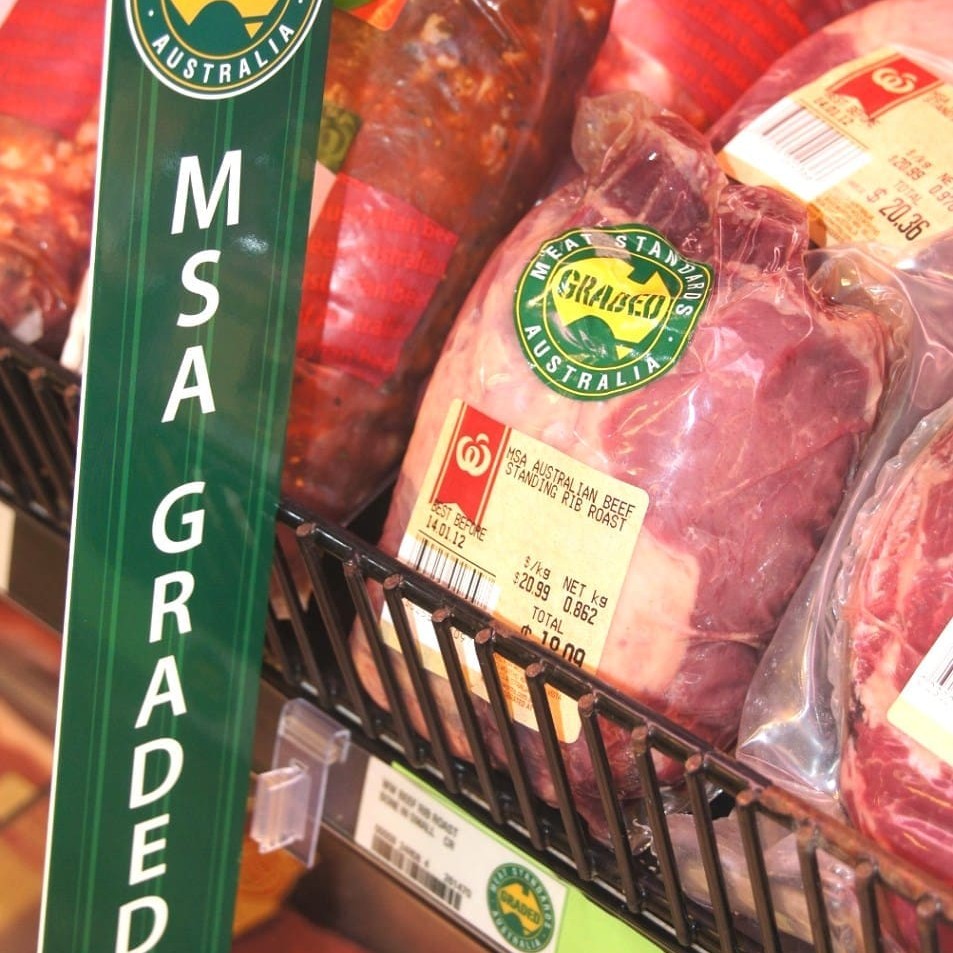 WOOLWORTHS is the big winner in the latest retail beef market share survey conducted on industry’s behalf by Nielsen Homescan.*
WOOLWORTHS is the big winner in the latest retail beef market share survey conducted on industry’s behalf by Nielsen Homescan.*
The nation’s largest supermarket chain now operates 920 stores across Australia, adding close to 100 new sites to its portfolio since 2010, and the growth is clearly evident in latest market share statistics.
For the rolling quarter ended January 21, Woolies lifted its share of national retail beef sales to 33.5 percent – its best result in at least three years, and possibly ever – representing a surge of 1.7pc share in the past six months. It appears to be the first time that Woolworths as controlled more than one third of the nation’s domestic retail beef sales, by value.
Biggest rival Coles basically held its ground in the latest survey, while the advance by Woolworths appears to have come at the expense of independent retail butchers and second-tier retail chains.
Deep discounting on selected red meat lines, including mince, plus heavy promotion appear to be delivering market share to Woolworths.
Coles held 24.8pc market share in the latest survey, up just 0.1pc from the previous month’s rolling quarter, still the company’s best result since August last year.
Independents, on the other hand, continued a long-term slide in market share, finishing January’s rolling quarter at 21.9pc, a 0.3pc loss on the previous month. This time a year ago, butchers still held a larger retail share than Coles, at 24.5pc of retail beef sales, representing a decline of 2.6pc share since.
Smaller supermarket chains have also recorded declines recently.
The independently-owned IGA group logged a 9.5pc share for the January rolling quarter, falling substantially from 10.3pc as recently as November.
Another smaller retailer, Aldi, eased slightly from 6.7pc to 6.6pc, while the ‘other’ supermarkets group slipped from 3.7pc share to 3.6pc, its worst result in 12 months.
It should be noted that the Nielsen assessment is based on rolling quarterly figures, not single monthly registrations, because they are regarded by analysts as being a more accurate reflection of longer-term trends.
Overall fresh meat sales value down
For the rolling quarter ended January 25, the fresh meat category (beef, chicken, lamb, pork, seafood) has recorded a decrease in value of 2.1pc compared to the same period last year.
This was driven by a decrease in price (-6.1pc), which was larger than the increase in volume (+4.2pc).
Beef’s value share of overall expenditure on fresh meat protein has decreased by 1.5 percentage points over the most recent quarter, compared to the same period a year ago, while chicken’s value share increased the most during the most (+0.75pcp). Pork (+0.32pc) and lamb (+0.22pc) also experienced increasing value share compared to last year.
All popular meats have experienced price drops during the latest quarter. Lamb was back 98c/kg, while beef declined 83c/kg. The decline in beef price is undoubtedly linked to the huge rise in kills seen in 2013 and 2014, due to widespread drought, which is pressuring supply-side factors. Intensively-raised chicken and pork were much less exposed to drought, provided feedstuffs are not affected. Seafood was the only category to show a rise.
It’s important to note, however, that the prices reported by Nielsen are measured as the average $/kg value of the items in the surveyed consumer shopping baskets. It does not attempt to represent the overall average value of beef and other proteins being sold in the retail marketplace.
Under these terms, beef recorded an average price of $9.27/kg for the January rolling quarter; chicken $7.98/kg (down 35c/kg on a year ago); lamb $11.13c/kg (down 98c on a year ago); and pork $10.08/kg (down 19c).
Retail fresh meat category share
In other information of value in the latest Nielsen survey, beef easily retained the highest share of meat sales against competing proteins, responsible for 34.5pc of all meat protein sales, down 0.3pc from the previous month, and a little below this time last year.
Chicken filled second place on 26.1pc of category value share, almost 1pc better than this time last year; lamb was third with 13.2pc, about the same as a year ago; and pork fourth with 10.7pc, slightly up.
* What is Nielsen Homescan?
- A consumer panel of 10,000 households
- Demographically and geographically representative of all Australian households
- Electronically record their household purchases of all grocery foods (fresh and packaged)
How are panel participants recruited?
- Households are recruited on-line via a random sampling method
- The Homescan panel is stratified by life stage, region and household size
- Households are screened to assess suitability and to ensure they do not work in marketing, market research or FMCG.
